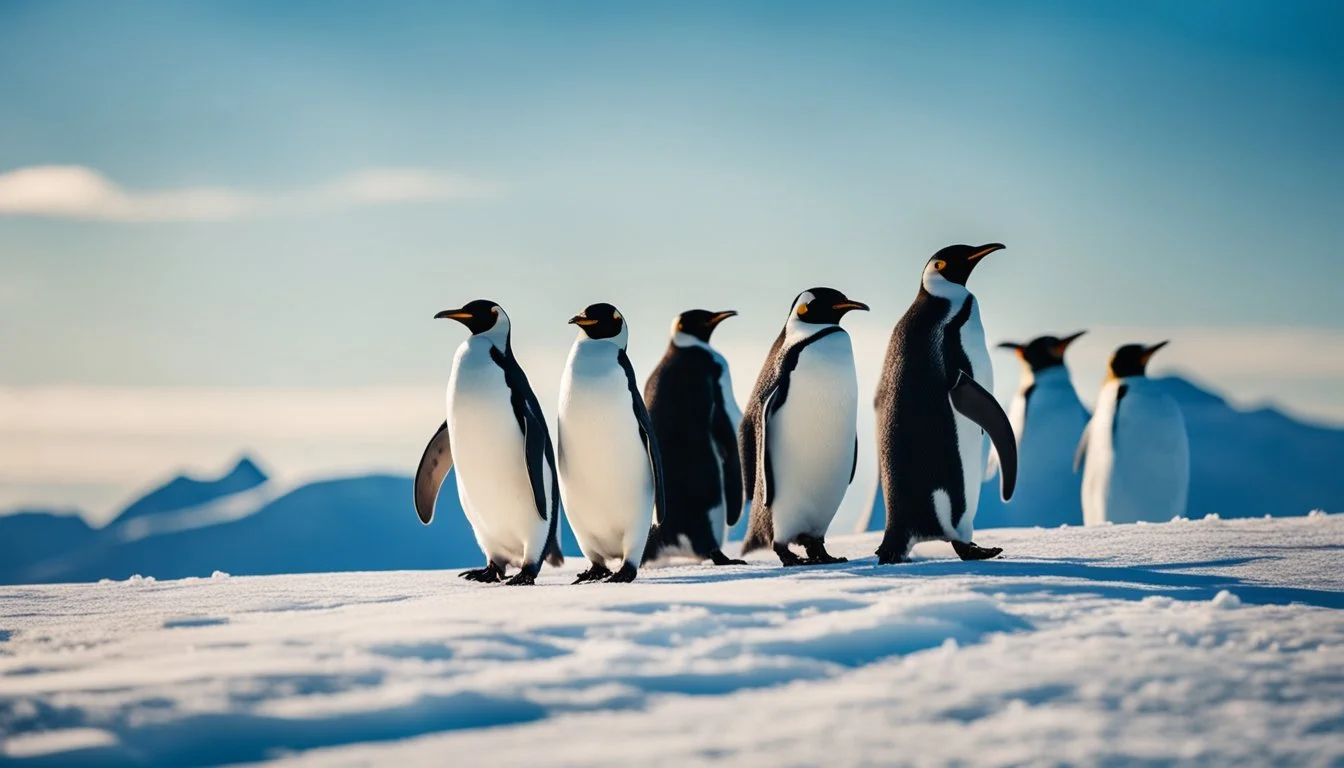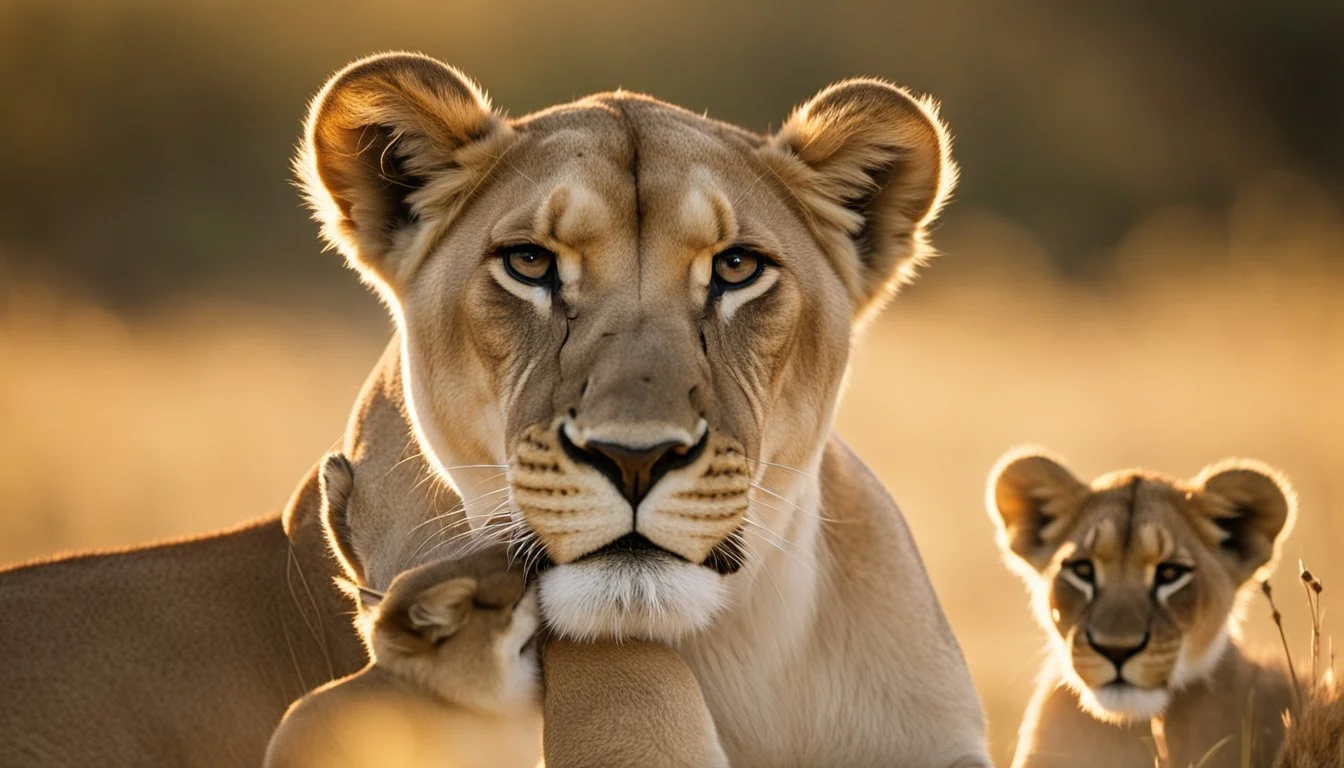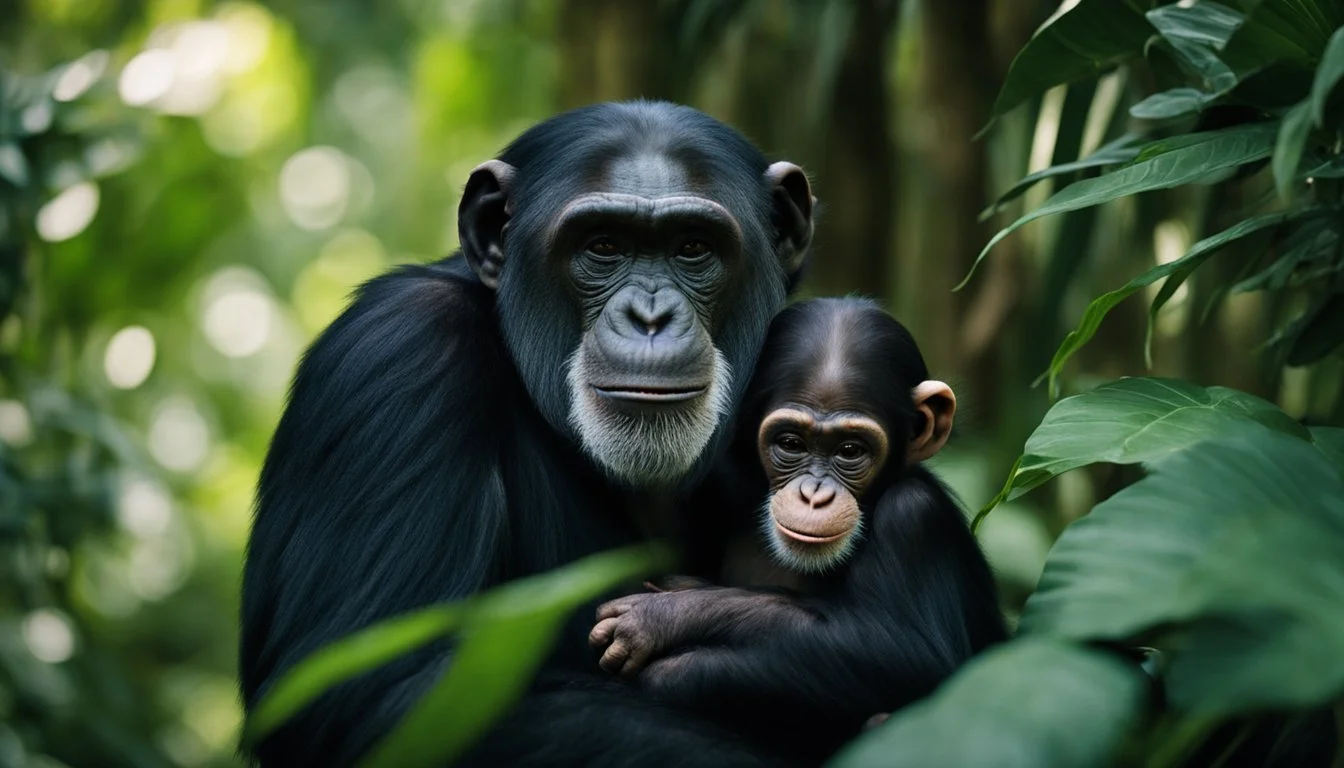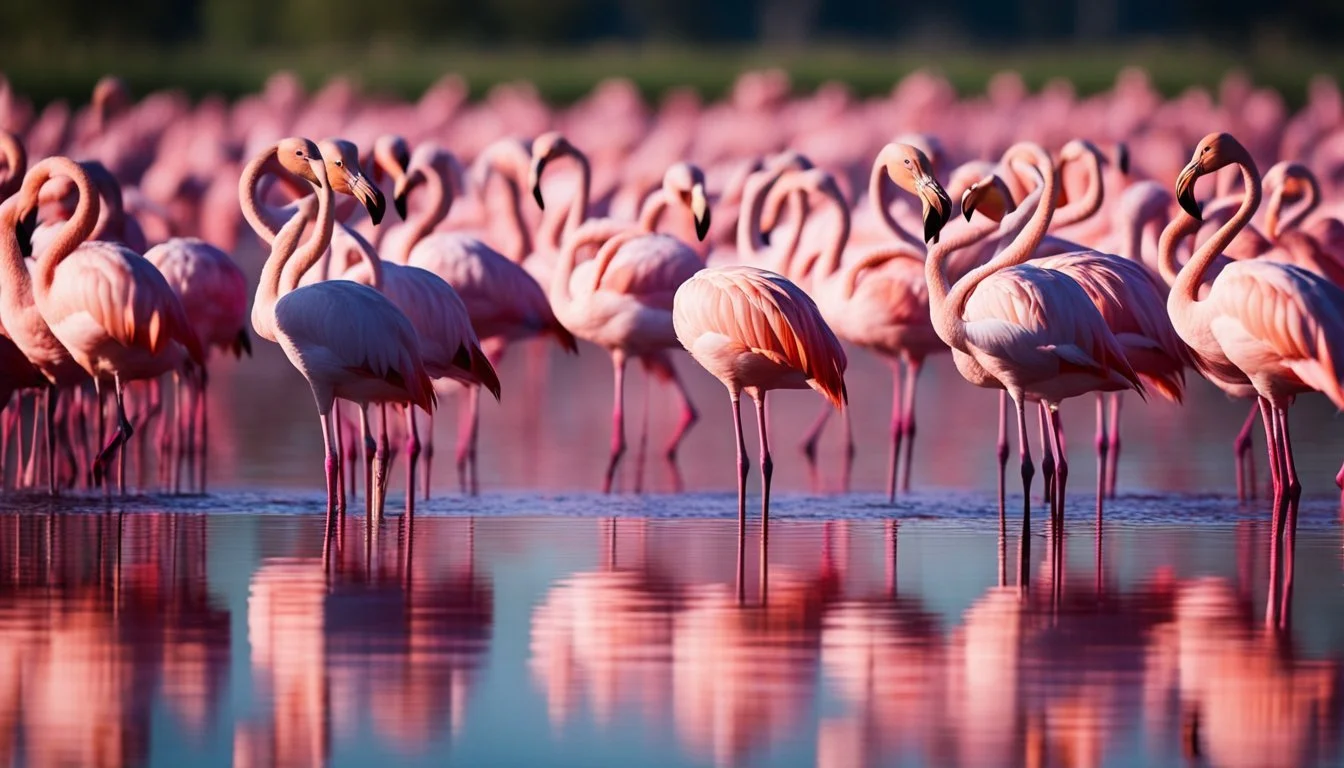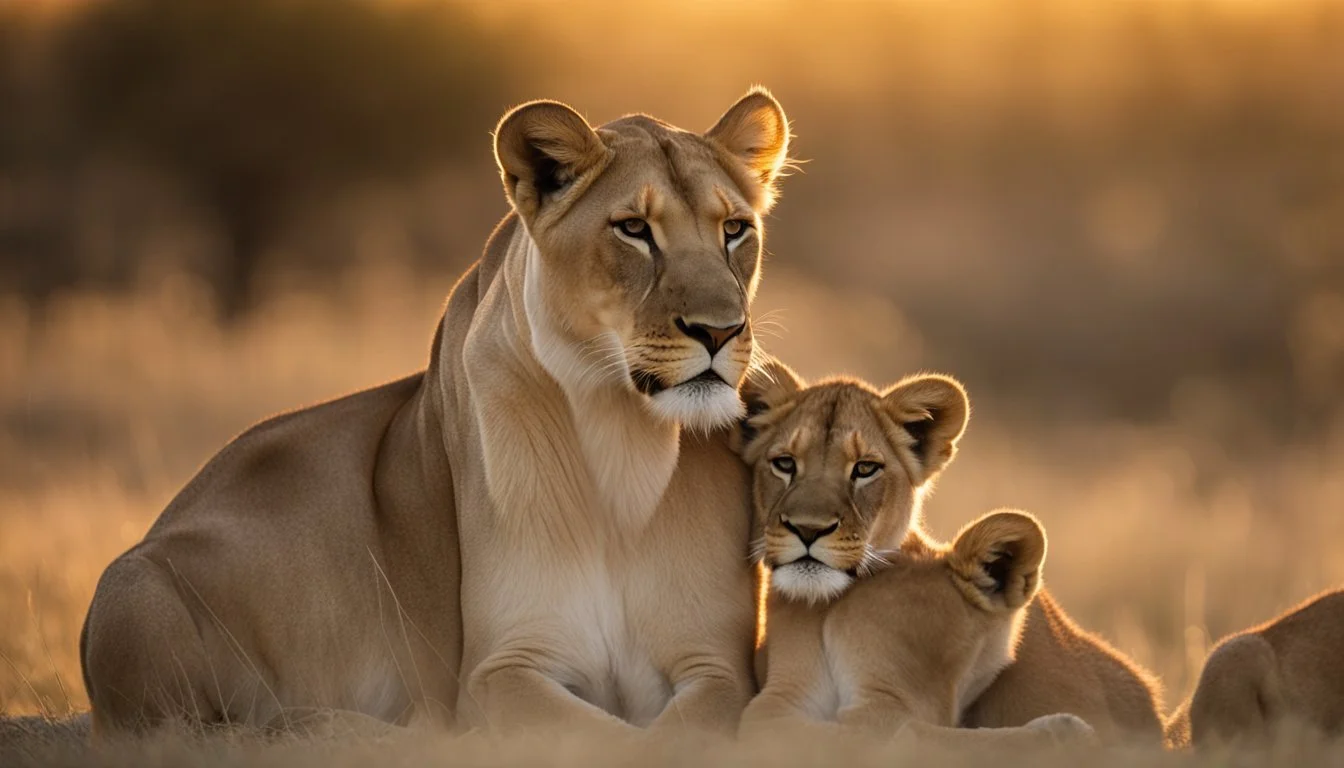8 Documentaries That Showcase Love in the Animal Kingdom
Nature's Most Heartwarming Bonds
Nature documentaries offer a captivating glimpse into the complex world of animal behavior. Among the most compelling aspects of these films are those that explore the bonds and relationships between creatures in the wild.
Documentaries showcasing love in the animal kingdom reveal surprising emotional depths and social connections across species. From devoted parental care to lifelong partnerships, these films challenge our understanding of animal cognition and social structures. By presenting intimate portrayals of animal relationships, they inspire empathy and foster a deeper appreciation for the natural world.
1) 'The Elephant Queen' (2018)
'The Elephant Queen' follows the journey of Athena, a 50-year-old matriarch elephant, as she leads her herd across the African savannah. Directed by Victoria Stone and Mark Deeble, this documentary captures the intimate moments of elephant family life.
The film showcases the complex social structures and emotional bonds within the elephant herd. It highlights Athena's role as a leader, protector, and nurturing figure for her family.
'The Elephant Queen' also explores the interconnectedness of various species in the ecosystem. From killifish to dung beetles, the documentary demonstrates how elephants' presence benefits other wildlife.
Narrated by Chiwetel Ejiofor, the film combines stunning visuals with a compelling narrative. It offers viewers a rare glimpse into the daily lives and challenges faced by these majestic creatures.
The documentary has received critical acclaim for its breathtaking cinematography and heartwarming storytelling. It serves as a powerful reminder of the importance of elephant conservation in the face of environmental threats.
More information on 'The Elephant Queen'
2) 'March of the Penguins' (2005)
'March of the Penguins' captivates audiences with its intimate portrayal of emperor penguins in Antarctica. Directed by Luc Jacquet, this French documentary showcases the annual journey these remarkable birds undertake for breeding.
The film follows emperor penguins as they trek across frozen landscapes to reach their breeding grounds. Viewers witness the penguins' unwavering dedication to their offspring, braving harsh weather conditions and predators.
Cinematographers Laurent Chalet and Jerome Maison spent a year in Antarctica capturing stunning footage. Their work reveals the penguins' fascinating behaviors, from courtship rituals to the careful nurturing of their chicks.
'March of the Penguins' resonates with audiences through its depiction of love, loss, and perseverance in the animal kingdom. The documentary's success led to widespread acclaim and an Academy Award for Best Documentary Feature.
More information on 'March of the Penguins'
3) 'Born to be Wild' (2011)
'Born to be Wild' offers a heartwarming glimpse into the world of animal conservation. This IMAX documentary, narrated by Morgan Freeman, follows two remarkable women dedicated to rescuing and rehabilitating orphaned animals.
In Kenya, Daphne Sheldrick runs an elephant sanctuary, caring for baby elephants whose mothers have fallen victim to poaching. Her tireless efforts give these young pachyderms a second chance at life in the wild.
Half a world away in Borneo, Biruté Mary Galdikas operates an orangutan rescue center. She works to save and nurture orphaned orangutans, preparing them for eventual release back into the rainforest.
The film showcases the deep bonds that form between humans and animals. It highlights the intelligence and emotional capacity of elephants and orangutans, as well as the dedication of their human caretakers.
'Born to be Wild' captures stunning footage of these animals in their natural habitats. It emphasizes the importance of conservation efforts in protecting endangered species and their ecosystems.
More information on 'Born to be Wild'
4) 'The Last Lions' (2011)
'The Last Lions' is a captivating wildlife documentary that follows the journey of a lioness named Ma di Tau in Botswana's Okavango Delta. Directed by Dereck and Beverly Joubert, the film showcases the fierce love and determination of a mother lion.
Ma di Tau faces numerous challenges as she fights to protect and provide for her cubs. The documentary highlights the strong bond between the lioness and her offspring, demonstrating the depth of maternal instinct in the animal kingdom.
The film also sheds light on the declining lion population in Africa. It reveals that lion numbers have drastically reduced from around 500,000 fifty years ago to approximately 20,000 at the time of filming.
'The Last Lions' combines stunning cinematography with a compelling narrative. It offers viewers an intimate look at lion family dynamics and the harsh realities of survival in the wild.
This documentary not only entertains but also educates audiences about the importance of lion conservation. It serves as a powerful reminder of the love and resilience found in nature.
More information about 'The Last Lions'
5) 'Chimpanzee' (2012)
'Chimpanzee' is a captivating nature documentary that follows the life of Oscar, a young chimpanzee in the Taï Forest of Ivory Coast. The film showcases the complex social dynamics and familial bonds within chimpanzee communities.
Narrated by Tim Allen, the documentary captures Oscar's journey as he learns essential survival skills from his mother. When tragedy strikes, leaving Oscar orphaned, the film takes an unexpected turn.
In a rare display of compassion, the alpha male of the group adopts Oscar. This unusual relationship demonstrates the capacity for love and altruism in chimpanzee societies.
The film's stunning cinematography brings viewers up close to these remarkable primates. It offers intimate glimpses into their daily lives, from tool use to hunting behaviors.
'Chimpanzee' not only entertains but also educates viewers about the threats facing these intelligent animals in the wild. It highlights the importance of conservation efforts to protect chimpanzee habitats.
More information on 'Chimpanzee' (IMDB)
6) 'Oceans: Our Blue Planet' (2018)
'Oceans: Our Blue Planet' takes viewers on a captivating journey through marine ecosystems. The film showcases the intricate relationships and behaviors of various sea creatures.
Narrated by Kate Winslet, this documentary highlights remarkable examples of love and care in the ocean. It features touching scenes of dolphin mothers nurturing their young and octopuses protecting their eggs.
The film also explores the unique courtship rituals of seahorses and the lifelong bonds formed by clownfish pairs. These intimate portrayals demonstrate the depth of connection present in marine life.
'Oceans: Our Blue Planet' combines stunning underwater cinematography with compelling storytelling. It reveals the emotional lives of sea creatures, challenging viewers to see marine animals in a new light.
More information on 'Oceans: Our Blue Planet'
7) 'The Crimson Wing: Mystery of the Flamingos' (2008)
This stunning nature documentary takes viewers to Tanzania's Lake Natron, where millions of lesser flamingos gather to breed. The film captures the remarkable life cycle of these vibrant pink birds in their harsh yet beautiful habitat.
Audiences follow the journey of a single flamingo chick from birth to adulthood. The documentary showcases the challenges these resilient creatures face, from predators to extreme weather conditions.
The flamingos' unique mating rituals and synchronized courtship dances are presented in breathtaking detail. Viewers witness the strong bonds that form between flamingo pairs and their dedication to raising their young.
'The Crimson Wing' highlights the critical importance of preserving the flamingos' fragile ecosystem. It emphasizes how environmental changes can impact these birds and their breeding grounds.
With its captivating cinematography and intimate portrayal of flamingo life, this film offers a fascinating glimpse into the world of these iconic birds and their expressions of love and devotion.
More information on 'The Crimson Wing: Mystery of the Flamingos'
8) 'The Ivory Game' (2016)
'The Ivory Game' is a gripping documentary that exposes the dark world of ivory trafficking. Directed by Richard Ladkani and Kief Davidson, the film takes viewers on a journey across Africa and Asia.
The documentary follows undercover intelligence operatives, activists, and rangers as they work to protect elephants from poachers. It reveals the complex network of illegal ivory trade and its devastating impact on elephant populations.
Viewers witness the dedication of those fighting to save these magnificent creatures. The film showcases the intelligence and emotional depth of elephants, highlighting the tragedy of their slaughter for their tusks.
'The Ivory Game' presents a stark reality: elephants could face extinction within 15 years if poaching continues unchecked. It serves as a call to action, urging viewers to support conservation efforts and demand stricter regulations on ivory trade.
More information on 'The Ivory Game'
The Role of Courtship in Animal Behavior
Courtship plays a crucial role in animal behavior, shaping mating patterns and reproductive success across species. It involves complex displays and rituals that facilitate partner selection and bonding.
Mating Rituals Across Species
Animals exhibit diverse courtship behaviors to attract mates. Male peacocks fan their vibrant tail feathers in an impressive display. Bowerbirds construct elaborate structures decorated with colorful objects to entice females.
Some species perform intricate dances. Birds of paradise execute acrobatic routines, while fireflies use synchronized light patterns to communicate interest. Certain fish species change colors or produce sounds to woo potential partners.
Pheromones also play a key role in many courtship rituals. Moths release chemical signals to attract mates from great distances. Elephants use a combination of vocalizations and scent markings during their mating periods.
Importance of Bonding for Survival
Courtship behaviors often lead to pair bonding, which can be critical for survival. In many bird species, mates collaborate to build nests, incubate eggs, and feed offspring. This shared parental care increases the chances of successful reproduction.
For some mammals, like wolves and lions, strong bonds formed during courtship contribute to the formation of cooperative social groups. These packs or prides work together to hunt, defend territory, and raise young.
Bonding can also provide protection. In penguin species, pairs engage in mutual preening and vocalizations to strengthen their connection. This bond helps them endure harsh Antarctic conditions and long periods of fasting during incubation.
Unique Parenting Roles in the Animal Kingdom
Animal parents display remarkable diversity in their caregiving strategies. From shared duties to cooperative communities, these approaches ensure offspring survival and development.
Shared Responsibilities Between Partners
Many species divide parental duties between partners. Emperor penguins take turns incubating their egg, with males enduring harsh Antarctic winters while females hunt. After the chick hatches, they alternate foraging trips to feed their young.
Seahorses exhibit a unique role reversal. Female seahorses deposit eggs into the male's brood pouch, where he fertilizes and carries them until birth. This pregnancy lasts up to 45 days, with the male providing nutrients and oxygen to the developing embryos.
In some bird species, both parents contribute equally to nest-building, incubation, and chick-rearing. The California condor exemplifies this, with pairs working together for up to six months to raise a single chick.
Examples of Cooperative Parenting
Some animals extend parenting beyond the nuclear family. Meerkats live in groups where subordinate members assist in rearing pups. These "helpers" babysit, groom, and even nurse young that aren't their own, increasing survival rates.
African elephants practice "allomothering," where females in the herd help care for calves. This shared responsibility allows mothers to forage more efficiently while ensuring constant supervision for young elephants.
In wolf packs, all members contribute to pup care. Older siblings often babysit and play with pups, teaching them important social skills. Non-breeding adults may even regurgitate food for the growing pups, supplementing their diet.
Communication in Animal Relationships
Animal documentaries reveal intricate communication methods used in relationships across species. These films showcase how creatures convey emotions, intentions, and vital information through various means.
Vocalizations and Their Meanings
Many animals use vocalizations to communicate with mates, offspring, and social groups. Whales produce complex songs that travel for miles underwater, serving multiple purposes in their relationships. Male humpbacks sing to attract females and establish dominance.
Bird calls play a crucial role in courtship rituals. Male nightingales serenade potential mates with elaborate melodies, while emperor penguins use distinct vocalizations to locate their partners and chicks in large colonies.
Primates exhibit sophisticated vocal communication. Vervet monkeys use different alarm calls to warn their group about specific predators, demonstrating a form of "proto-language."
Non-Verbal Communication Methods
Animals also rely heavily on non-verbal cues to express themselves. Facial expressions and body language convey a wealth of information. Chimpanzees use a variety of facial expressions similar to humans, indicating emotions like happiness, anger, or fear.
Scent marking is another important communication tool. Many mammals leave olfactory signals to mark territory or signal reproductive status. Lions use scent glands to leave messages for other pride members and potential mates.
Visual displays are common in courtship rituals. Peacocks fan their vibrant tail feathers to attract peahens, while fireflies use bioluminescent flashes in specific patterns to find mates.
Touch plays a vital role in bonding. Elephants use their trunks to caress and comfort family members, strengthening social ties within their herds.


